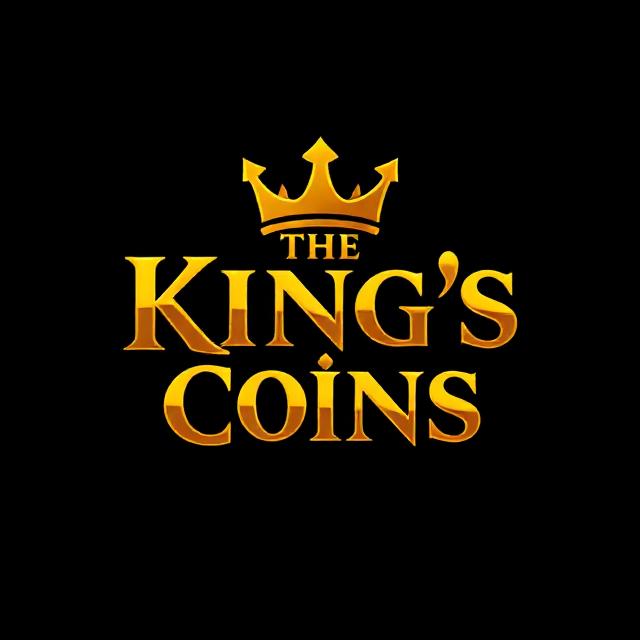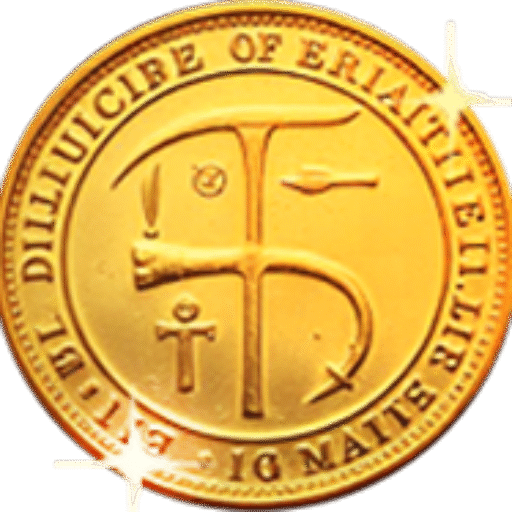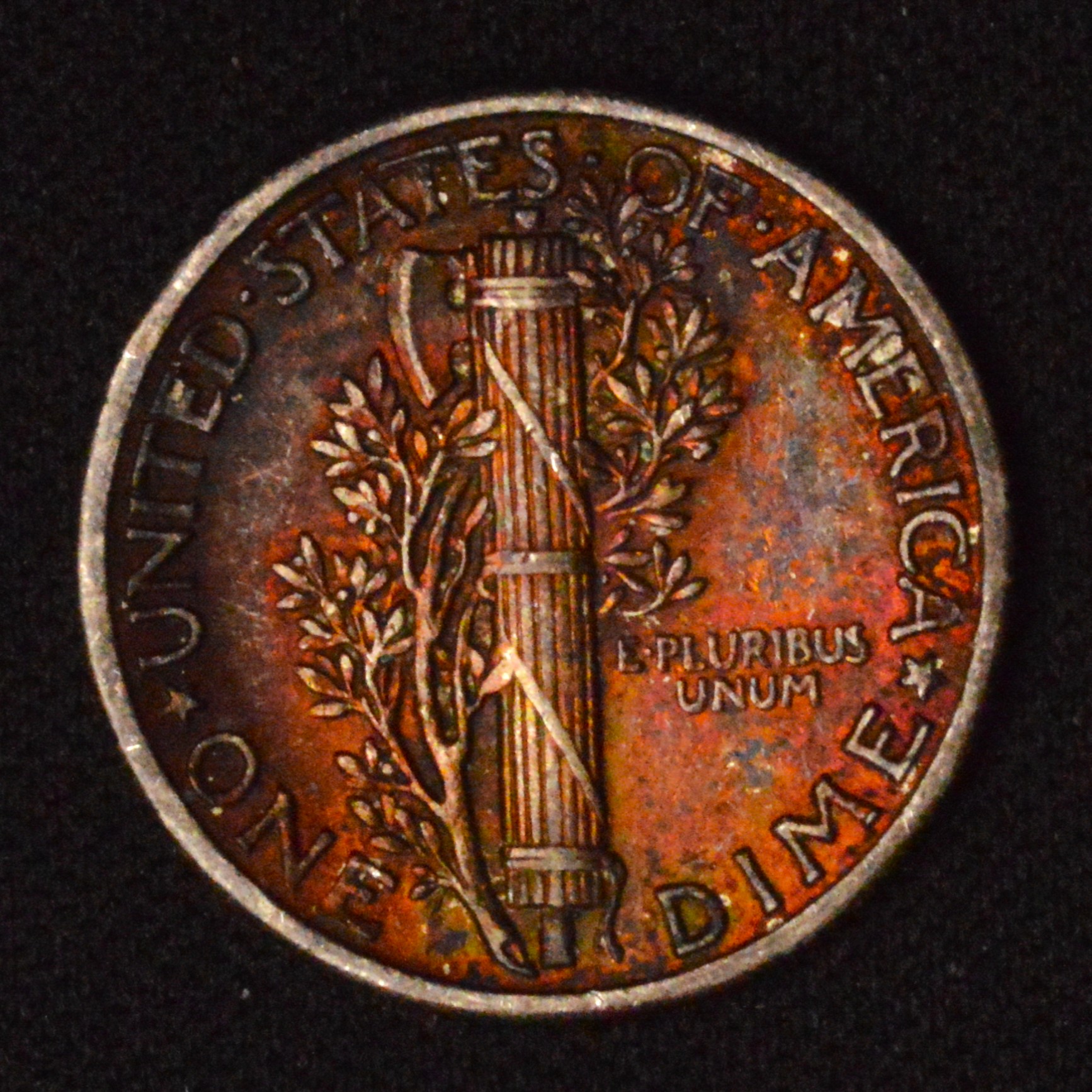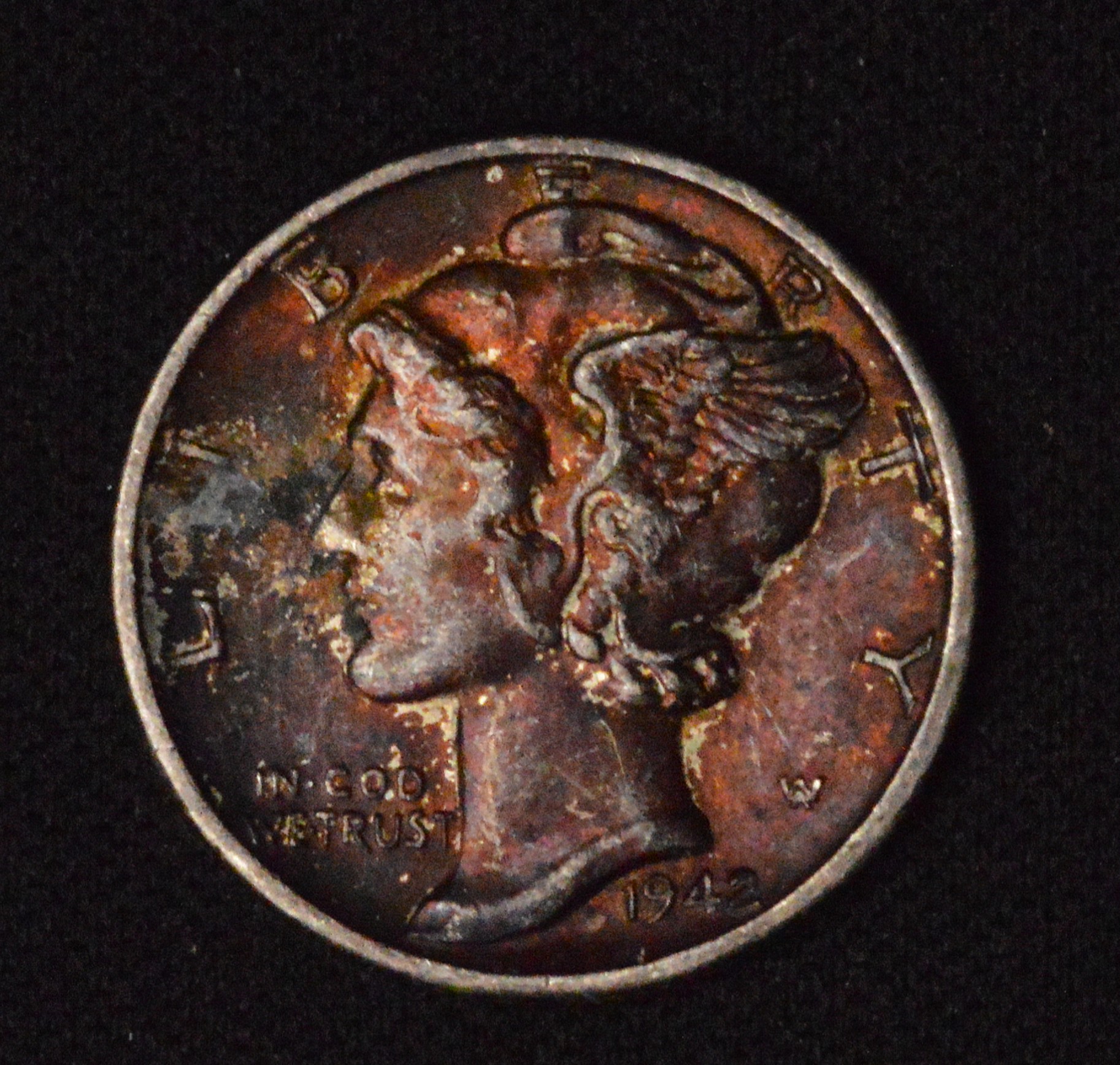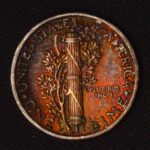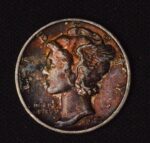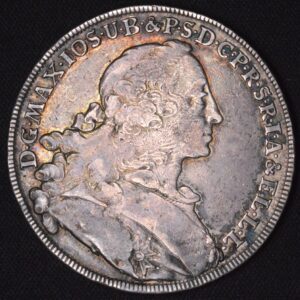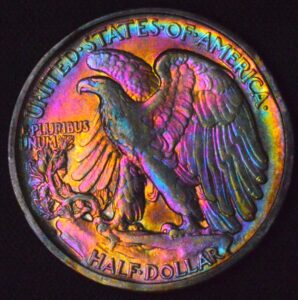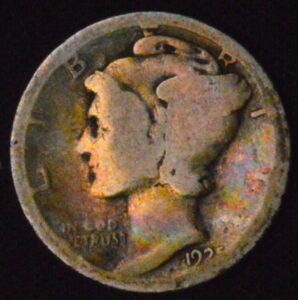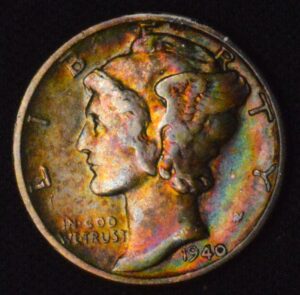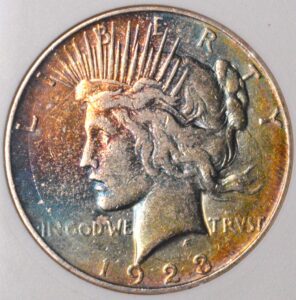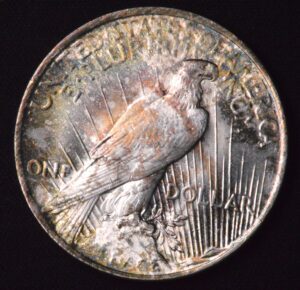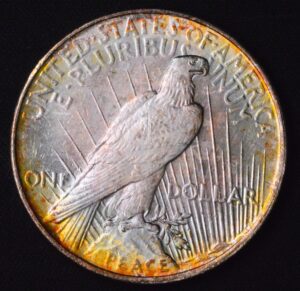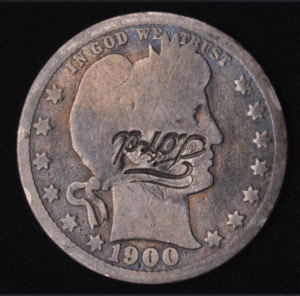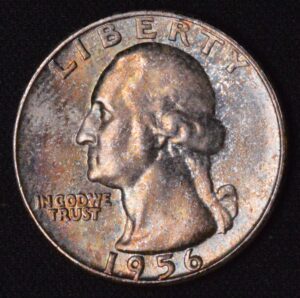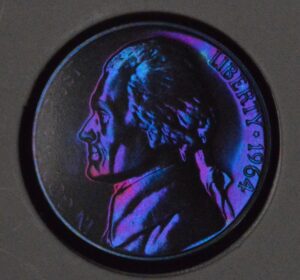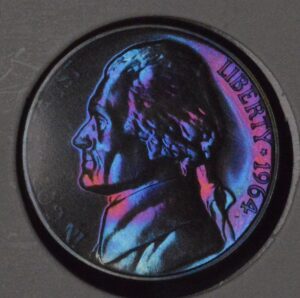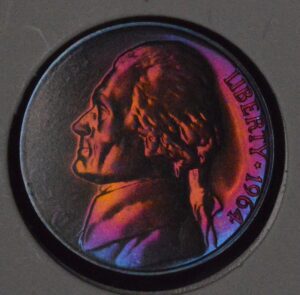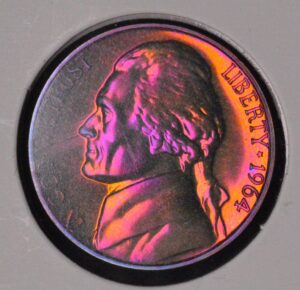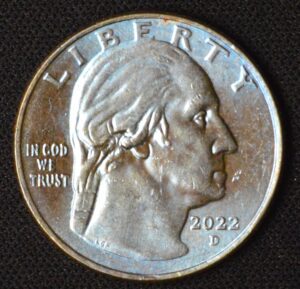Description
The 1942 Mercury Silver Dime is a classic example of U.S. coinage, cherished for its historical significance and iconic design by Adolph A. Weinman. Composed of 90% silver and 10% copper, this dime features the Winged Liberty Head—the figure often mistaken for Mercury—symbolizing freedom of thought. Its reverse shows a fasces (a bundle of rods with an axe) surrounded by olive branches, symbolizing strength and peace. Typical mint marks for this year are Philadelphia (no mint mark), Denver (D), and San Francisco (S).
A “Monster Reverse Radical Reds” Mercury Dime refers to a coin exhibiting striking red toning on the reverse side, typically a radiant, vibrant reddish hue that dramatically enhances its eye appeal. Red toning on silver coins develops naturally over decades due to oxidation and environmental factors and is highly prized among collectors for its beauty and rarity, often significantly boosting desirability and value. This toning contrasts beautifully with the silver, creating an almost fiery effect on the coin’s reverse imagery.
1942 Mercury dimes are not rare in general, with large mintages across all three mints, but examples showing exceptional reverse red toning are less common and sought after especially in high grades or with full bands (sharp detail on the fasces rods). These coins are often collected both for their historic role during World War II and their intrinsic silver value, but premium toned examples command collector premiums far beyond metal prices.
Numismatic collectors prize coins graded in Mint State condition showing such vivid red toning, often calling them “Monster Reds” if the color saturates the entire reverse with a rich intensity. These coins are considered natural and original examples where toning enhances the coin’s beauty without detracting from its surfaces. Typically, these coins must be uncleaned to retain grade and toning quality, reinforcing value.
In summary, a 1942 Mercury Silver Dime with “Monster Reverse Radical Reds” toning is an exceptional and visually stunning example of this historic silver dime. Its vibrant red hues on the reverse side elevate the coin’s desirability, serving as a prized collectible for both numismatists and silver enthusiasts alike.
The 1942 Mercury Silver Dime is a classic example of U.S. coinage, cherished for its historical significance and iconic design by Adolph A. Weinman. Composed of 90% silver and 10% copper, this dime features the Winged Liberty Head—the figure often mistaken for Mercury—symbolizing freedom of thought. Its reverse shows a fasces (a bundle of rods with an axe) surrounded by olive branches, symbolizing strength and peace. Typical mint marks for this year are Philadelphia (no mint mark), Denver (D), and San Francisco (S).
A “Monster Reverse Radical Reds” Mercury Dime refers to a coin exhibiting striking red toning on the reverse side, typically a radiant, vibrant reddish hue that dramatically enhances its eye appeal. Red toning on silver coins develops naturally over decades due to oxidation and environmental factors and is highly prized among collectors for its beauty and rarity, often significantly boosting desirability and value. This toning contrasts beautifully with the silver, creating an almost fiery effect on the coin’s reverse imagery.
1942 Mercury dimes are not rare in general, with large mintages across all three mints, but examples showing exceptional reverse red toning are less common and sought after especially in high grades or with full bands (sharp detail on the fasces rods). These coins are often collected both for their historic role during World War II and their intrinsic silver value, but premium toned examples command collector premiums far beyond metal prices.
Numismatic collectors prize coins graded in Mint State condition showing such vivid red toning, often calling them “Monster Reds” if the color saturates the entire reverse with a rich intensity. These coins are considered natural and original examples where toning enhances the coin’s beauty without detracting from its surfaces. Typically, these coins must be uncleaned to retain grade and toning quality, reinforcing value.
In summary, a 1942 Mercury Silver Dime with “Monster Reverse Radical Reds” toning is an exceptional and visually stunning example of this historic silver dime. Its vibrant red hues on the reverse side elevate the coin’s desirability, serving as a prized collectible for both numismatists and silver enthusiasts alike.
The 1942 Mercury Silver Dime is a classic example of U.S. coinage, cherished for its historical significance and iconic design by Adolph A. Weinman. Composed of 90% silver and 10% copper, this dime features the Winged Liberty Head—the figure often mistaken for Mercury—symbolizing freedom of thought. Its reverse shows a fasces (a bundle of rods with an axe) surrounded by olive branches, symbolizing strength and peace. Typical mint marks for this year are Philadelphia (no mint mark), Denver (D), and San Francisco (S).
A “Monster Reverse Radical Reds” Mercury Dime refers to a coin exhibiting striking red toning on the reverse side, typically a radiant, vibrant reddish hue that dramatically enhances its eye appeal. Red toning on silver coins develops naturally over decades due to oxidation and environmental factors and is highly prized among collectors for its beauty and rarity, often significantly boosting desirability and value. This toning contrasts beautifully with the silver, creating an almost fiery effect on the coin’s reverse imagery.
1942 Mercury dimes are not rare in general, with large mintages across all three mints, but examples showing exceptional reverse red toning are less common and sought after especially in high grades or with full bands (sharp detail on the fasces rods). These coins are often collected both for their historic role during World War II and their intrinsic silver value, but premium toned examples command collector premiums far beyond metal prices.
Numismatic collectors prize coins graded in Mint State condition showing such vivid red toning, often calling them “Monster Reds” if the color saturates the entire reverse with a rich intensity. These coins are considered natural and original examples where toning enhances the coin’s beauty without detracting from its surfaces. Typically, these coins must be uncleaned to retain grade and toning quality, reinforcing value.
In summary, a 1942 Mercury Silver Dime with “Monster Reverse Radical Reds” toning is an exceptional and visually stunning example of this historic silver dime. Its vibrant red hues on the reverse side elevate the coin’s desirability, serving as a prized collectible for both numismatists and silver enthusiasts alike.
CUSTOMER FEEDBACK








Related Products & Newly Released!




SHIPPING POLICY
Your order is shipped from the United States with USPS tracking within one business day.
14 Day Return Policy
You can return your item back within
14 days of the purchase

Secure payments
Your payments are 100% secure and are processed through Square or PayPal on a protected security network.
SHIPPING POLICY
FREE International and Domestic (United States) shipping. Your order is shipped with USPS tracking 24 hours after you order.
14 Day Return Policy
You can return your item back within
14 days of the purchase

Secure payments
Your payments are 100% secure and are processed through Square or PayPal on a protected security network.
RESOURCES
support
Get Real Deals!
Sign up now to receive our articles for the latest insights and promotions!
RESOURCES
support
Get Fresh Articles!
Signup our newsletter to get update insight or promotions.
